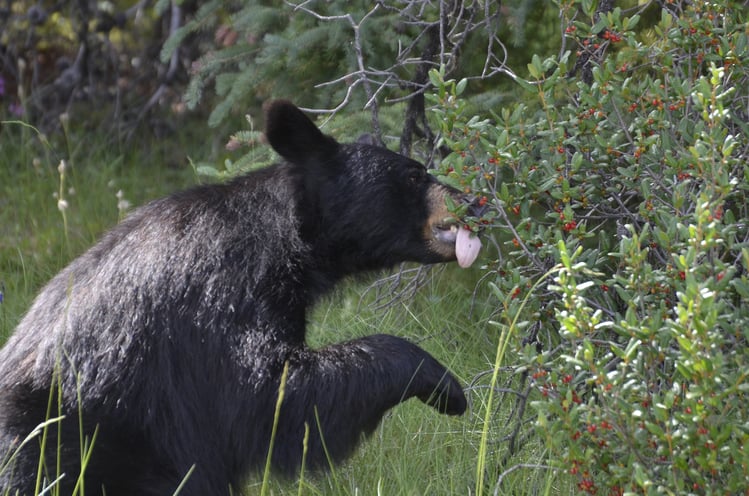This time of year I find myself more than ever craving a summer sweet treat, ice cream. More specifically, a scoop of strawberry, a scoop of cheesecake and loads of waffle cone crumbles as a topping. Some would say it’s the hot weather that causes this ice cream urge, while others would claim it is my, “sweet tooth”. The more I recall my seasonal cravings, it seems as though I can always find an excuse to shovel in the sugar.
I was interested to find out that people and most animals have a soft spot for things that taste sweet. A so called “sweet tooth” is not simply an excuse to intake delicious treats, but it truly is a means of survival. To clarify my slight exaggeration, we as humans have physiologically associated sweet tastes with high energy foods, and this very well could’ve helped out our early ancestors survive in their environment. In the past, sweets could be called a necessity and in present day they are certainly more of an indulgence.

Not only do most humans enjoy sweets, obviously some more than others, but so do most animals. Do they indulge in the sweet nectar of flowers or crave the taste of wild strawberries because of their “sweet tooth”? For animals one can assume it relates more to searching for high calorie foods. But for now, let’s enjoy the fact that humans and animals have this in common and a trip to the “candy store” could be just as exciting for a foraging black bear as it is for a well behaved child, for both a reward. We all can take pleasure in browsing the aisles of nature’s candy shop, where sweets are plentiful, and even better, free!

It is during the summer months and into fall that sugar addicts can find what they are looking for in the mountains, valleys and along the streams of Colorado. There are too many to include in this article, so I will highlight several of the tastiest.
The Thimbleberry plant, Rubacer pariviflorum, is a big plant, sometimes growing up to 6 feet tall with maple like leaves and relatively large white flowers. It produces red berries that are very rich and fruity in taste. The name rubacer can be broken into “ruber” red, which the fruit definitely are and “acer”, which refers to the maple like leaf. You can begin looking for ripened berries in mid to late summer. By gathering two cups of these scrumptious berries you can make Thimbleberry jam and satisfy your “sweet tooth” every morning by spreading it generously on toast.
Wild Raspberry, Rubus Idaeus, like the Thimbleberry is in the Rose Family. It sometimes can be found in dense patches and other times sparsely scattered. Their berries ripen in late summer into early fall and in a good year are plentiful. However, there are years when the plants produce very few berries and often times the animals will get to them before humans do. Black Bears use their nimble lips to pluck off only the ripest and sweetest berries on the bush. If you are able to collect a few handfuls before they get to them, I recommend eating them as a topping on frozen yogurt and you can do this guilt free! Raspberries are high in anti-oxidants, in some cases containing 50% more than other fruits such as strawberries and 3 times as many as kiwi fruit!
Chokecherry, Prunus virginiana, also in the rose family, is a tree commonly found in central and northern states within the US, from coast to coast. In spring the Chokecherry tree produces a showy display of beautiful fragrant flowers and later yields an abundance of tasty berries during the summer months. The berries are dark purple or black when ripe. More mature trees will produce enough fruit for pies, jelly and to support the efforts of bears looking to pack on the pounds for hibernation in the fall. The fruit is also eaten by grouse, turkeys, fox, deer, coyotes, bighorn sheep, mountains goats, rabbits and squirrels. Depending on location you can find fruit from July to September. I am thinking that a chokecherry pie would satisfy my sweet tooth any month of the year.
Although, there are many choices for sweets in nature, it still does not cover all cravings, especially not chocolate, which in my opinion, has special powers and I am confident there are others out there who would agree. But, berries serve as a healthy alternative from nature’s candy store, the store that is open for business only a few months out of the year. It is definitely worth taking advantage of, both for people desiring sweets and for wild critters alike.
Gina joined Walking Mountains in 2007 as Youth Programs Director. She now is a part of the Development Team, seeking out and writing education grants to support both Youth and Community Programs. Gina earned her B.S. in agricultural science from Truman State University with an emphasis in environmental science. Gina worked for Yellowstone National Park for four seasons and then as an instructor at the Orange County Outdoor Science School in California. Gina also holds dual teaching licensure in elementary education and special education from the University of Colorado at Denver, as well as a M.A. in science education. Gina’s passions include hiking, biking, skiing and teaching kids about the natural world.








